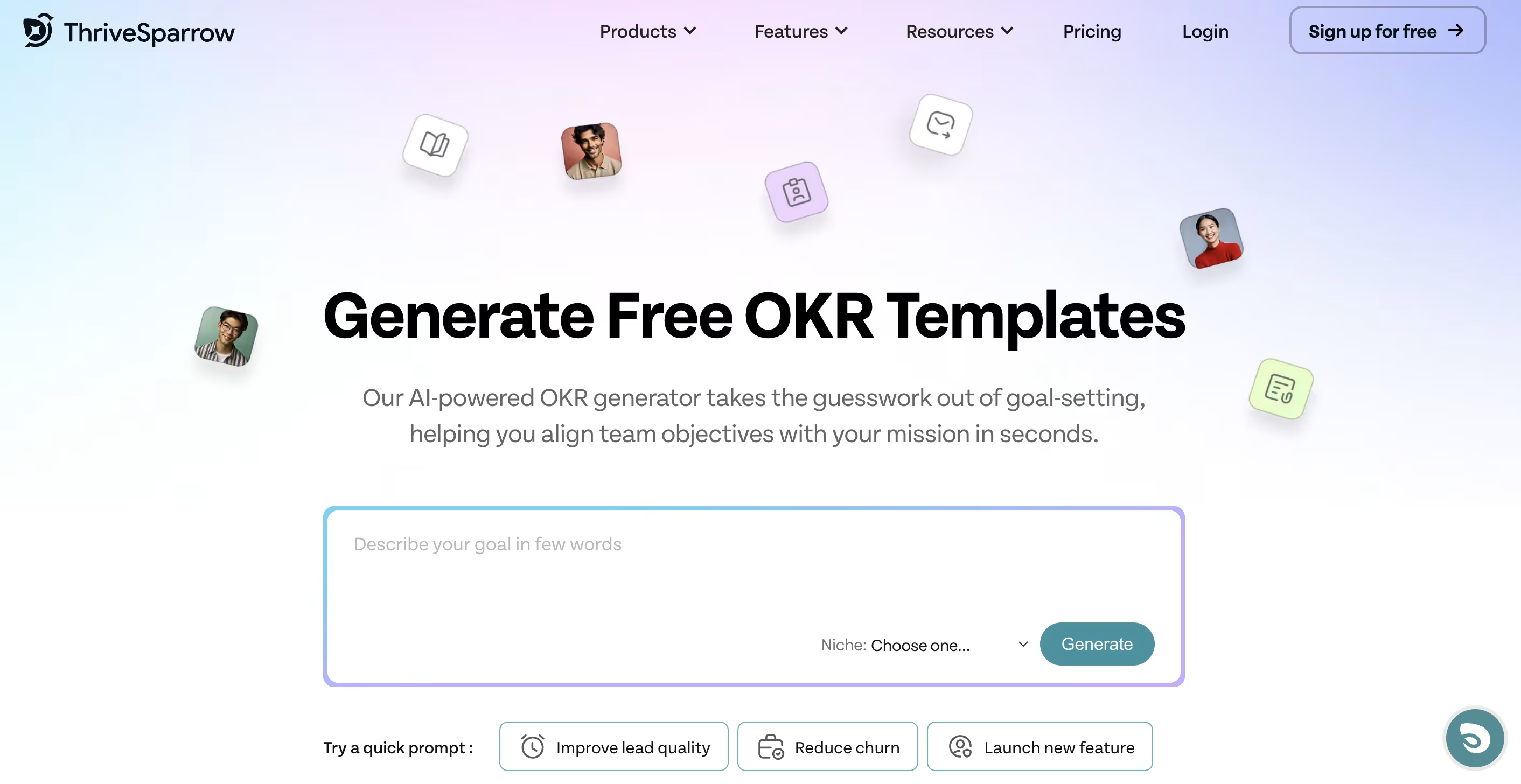Strategic goals are clear, measurable, long-term ambitions—your company’s north star for real progress. This blog offers 40 proven goal examples across finance, customer experience, innovation, people, and sustainability—plus fresh trends (like digital well-being and AI ethics).
And you’ll discover how to choose the right objectives, how to track progress, and where to find credible templates (from both business experts and active peer communities like Reddit). By the end, you’ll have everything you need to align your teams and move your company forward with confidence.
What Are Strategic Goals?
Strategic goals are high-level, measurable objectives that chart a company’s direction for the next 1 to 5 years. Instead of focusing on daily to-dos, these big-picture aims answer: “Where do we want to be?” and “How will we know we got there?”
Key characteristics:
- Long-term and always measurable: Every goal looks beyond the next quarter and has clear success metrics—not just vague intentions.
- Deeply tied to your company’s mission and vision: Strategic goals actively reflect what your business stands for.
- Broad, yet highly actionable: They give all departments—Sales, Service, Ops, People, Innovation, and more—a guiding star that still translates down to team action.
- Ambitious but realistically achievable: The best goals stretch your organization in meaningful ways, but aren’t out of reach.
- Framework-driven for tracking: Use standards like SMART (Specific, Measurable, Achievable, Relevant, Time-bound) or OKRs (Objectives and Key Results) to create, measure, and adapt each goal as you move forward.
- Communicated and visible: Effective strategic goals are shared openly, so everyone—from interns to executives—can see how their actions contribute.
Why Strategic Goals?
Strategic goals are the backbone of long-term business success. They keep your strategy broad enough to cover every critical area, while still allowing for focus, clarity, and accountability across the company.
Main Benefits:
- Every business pillar gets attention: No more blind spots around people, innovation, or sustainability—each essential function is covered.
- Balanced growth: Ambitious, company-wide goals work alongside practical, measurable team targets for smarter progress.
- Encourages teamwork: Shared goals tear down silos and improve collaboration between departments.
- Drives accountability: Assigning clear ownership for each goal makes progress transparent, and both wins and setbacks easy to track.
Strategic goals make sure everyone’s rowing in the same direction—and that no critical aspect of growth gets left behind.

40 Strategic Goals for Your Company (With Explanations)
1. Finance Goals
- Increase annual revenue by 15% in two years: Majority of businesses grow through steady, incremental sales increases—set a number and work backward.
- Reduce cost of goods sold (COGS) by 8%: Negotiate with suppliers, streamline production, drive real savings.
- Boost gross profit margin by 20%: Find areas for better pricing or cost efficiencies across departments.
- Maintain six months’ cash reserves: Essential for withstanding unexpected downturns or seizing new opportunities.
- Grow recurring revenue to 40% of total: Monthly or annual contracts bring financial stability and predictability.
- Add two new revenue streams: Reduces your reliance on a single product or customer base.
2. Customer Goals
- Raise Net Promoter Score (NPS) from 35 to 50: Turning buyers into promoters is the strongest sign of customer love.
- Increase retention by 10% per year: Loyal customers are more profitable and less price-sensitive.
- Launch 24/7 customer support: Accessibility demonstrates your commitment to service.
- Shorten onboarding time by 30%: The faster customers see value, the longer they stick around.
- Achieve 95% satisfaction in surveys: High bars make for high-performing teams.
- Drive 15% of new sales via referrals: Your best marketing channel is a delighted user.
3. People & Employee Goals
- Score 90% employee engagement: Happy employees build great companies.
- Cut voluntary turnover by 20%: Keep your best people and reduce costly hiring churn.
- Run quarterly pulse surveys: Respond faster to issues and boost trust.
- Provide personalized career plans to every staffer: Loyalty and enthusiasm skyrocket.
- Promote 30% of roles internally: Prove that growth happens from within.
- Train 80% of managers in leadership skills: Great managers deliver great outcomes.
4. Operations Goals
- Automate 30% of manual workflows: Remove the bottlenecks that slow everything down.
- Cut product defects by 25%: Protect your reputation and bottom line.
- Speed up order fulfillment by 20%: Fast beats slow, every time.
- Roll out business continuity plans company-wide: Stay ready for any disruption.
- Adopt an ERP to unify operations: Better data, smarter choices.
- Hit a 98% on-time delivery rate: Reliability wins customers—and partners.
5. Innovation Goals
- Launch two new products/features every year: Keep pace with evolving customer needs.
- Invest 15% of budget in R&D: Sustained innovation is a business engine.
- File two patents every year: Guard your most valuable creations.
- Bring AI-powered insights to decisions: Automate the busywork, amplify results.
- Form a cross-department innovation team: Collaboration sparks great ideas.
- Test three promising technologies annually: Stay ahead of competitors.
6. Culture & DEI Goals
- Reach 40% women in leadership: Inclusive teams build better companies.
- Deliver semi-annual DEI trainings: Awareness leads to measurable change.
- Create peer recognition platforms: Everyday wins deserve to be celebrated.
- Score 85%+ on well-being metrics: Health really is wealth.
- Mandate two daily wellness breaks: Combat remote burnout and boost focus.
- Engage 60% of staff in volunteer work: Purpose keeps people invested.
7. Sustainability & ESG Goals
- Cut carbon footprint by 25% in three years: Sustainable is now non-negotiable.
- Get 50% of energy from renewables: Reduce costs and meet regulations.
- Eliminate single-use plastics: Sustainability starts with daily choices.
- Publish ESG/CSR reports yearly: Transparency builds trust.
Where to Find the Best OKR Templates and Real-World Examples
Looking for proven, community-validated OKR templates?
Check out r/okrs on Reddit—Reddit’s largest dedicated OKR community. You’ll find downloadable templates, real business case studies, and active advice from professionals using OKRs in real organizations.
For more structured frameworks, compare top-rated community resources with expert-curated templates like Tability’s OKR template roundup and Benzne Consulting’s Google Sheet.
As mentioned earlier, you can also generate OKR templates for free with ThriveSparrow.
After having a clear idea of all of these resources, why not experience organized goal-setting for yourself?
Take ThriveSparrow for a spin—set a few goals, invite your team, and see how easy (and motivating) it is to track real progress, not just fill out templates.
.avif)
Why is ThriveSparrow best for OKR's?
Most teams struggle not with setting goals, but with tracking, adjusting, and acting on them. That’s where modern engagement and performance platforms come in:
- Instantly gather employee feedback as you roll out new objectives.
- Track OKRs along with employee sentiment and recognition.
- Turn data into insights—so every team can see where they stand.
- One-click dashboards and visual progress reports mean no guesswork.
No pressure—try it free for 14 days and see if your team clicks with it.
How to Implement and Track Strategic Goals
Turning inspiration into action is all about systems—regular reviews, tracking, and feedback.
Step 1: Gap analysis
Find out where you stand now versus where you want to be. (See Investopedia’s quick guide.)
Step 2: Assign ownership
Every goal gets a champion—clear responsibility means no goal floats.
Step 3: Make each goal SMART
Specific, Measurable, Achievable, Relevant, Time-bound. No exceptions.
Step 4: Use public OKRs/dashboards
Make progress visible. OKRs (Objectives and Key Results) are easy to share with your whole team, especially when tracked through modern software.
Step 5: Quarterly reviewsCheck progress, remove roadblocks, and celebrate wins. Don’t let objectives collect dust.
Final Thoughts
Strategic goals unite your business, providing a clear path to growth, better results, and a more engaged workforce. Set clear targets, review them regularly, and empower every employee to contribute to your journey.
Ready to get started?
With ThriveSparrow, tracking goals, gathering feedback, and recognizing your team’s progress is simple. Start your free 14-day trial now—and turn your strategic plan into real results.
FAQs
1. What makes a strategic goal different from a regular goal?
Strategic goals are long-term, high-impact targets that set a company’s path forward, whereas regular goals are often short-term or team-specific.
2. How can I choose the right goals for my company?
Start with your broader vision, analyze gaps, and choose goals that are relevant, measurable, and tied to clear business outcomes.
3. How often should I check on strategic goal progress?
Quarterly reviews help teams catch issues, celebrate quick wins, and adapt to new realities.
4. What’s the biggest hurdle to goal achievement?
Lack of follow-up. Assign owners, use public dashboards, and keep teams engaged with regular check-ins—ideally with the help of a platform like ThriveSparrow.













.avif)

